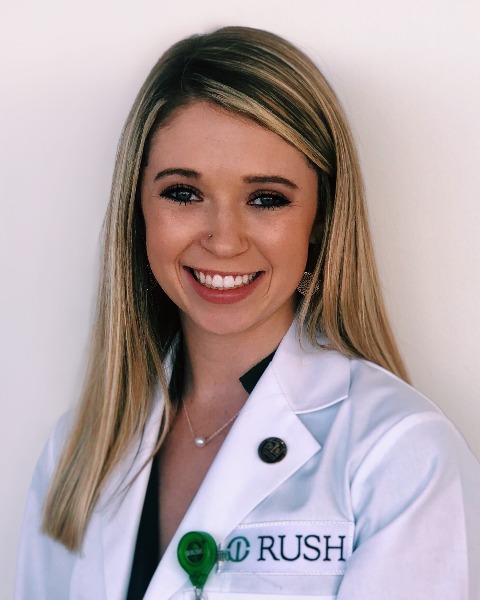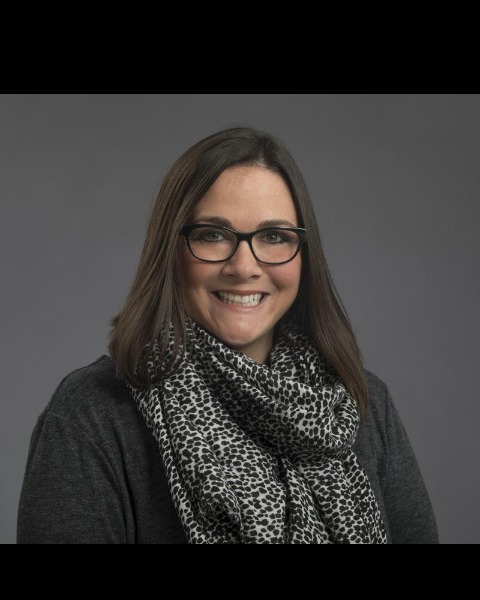Adult Diagnostic (AD)
(PP1605) Diagnostic Implications and Interventions in the Case of Temporal Bone Encephalocele

Madison Muccino, BS
Graduate Student Clinician
Rush University Doctor of Audiology Program, United States- RS
Robin Stoner, AuD
Clinical Audiologist and Assistant Professor
Rush University Medical Center
Chicago, Illinois, United States 
Megan Worthington, AuD
Clinical Education Manager
Rush University
Lead Presenter(s)
Contributor(s)
The patient, a 43-year-old female, was diagnosed with a left temporal bone encephalocele at Rush University Medical Group in 2019. Her history is significant for multiple middle ear surgeries and infections. She has chosen the wait-and-watch approach, rather than surgical intervention, at this time. The goal of this presentation is to review anatomy within the brain and middle ear, identify temporal bone defects, describe the typical patient presentation in temporal bone encephalocele, emphasize the possible life-threatening complications associated with temporal bone defects, and introduce possible surgical interventions for repair.
Summary:
The presentation describes the case of a 43-year-old female who was diagnosed with a left temporal bone encephalocele at Rush University Medical Group in 2019. The purpose of this presentation is to review the anatomy within the brain and middle ear, identify temporal bone defects, describe the typical patient presentation in temporal bone encephalocele, emphasize the possible life-threatening complications associated with temporal bone defects, and introduce possible surgical interventions for repair. Following the patient encounter in the clinic setting, research was completed to better understand the anatomy of the brain and middle ear space, as well as different temporal bone defects. The roof of the middle ear is formed by a thin bone, the petrous portion of the temporal bone, which separates the middle ear from the middle cranial fossa. If there is a weak area of bone between the ear and the brain, constant pressure can push the dura and the brain into the middle ear space (Themes, 2016). The weak area can be caused by erosion of the temporal bone by chronic ear infections, head trauma, or middle ear surgeries. However, according to McNulty et al. (2020), the incidence of spontaneous defects is increasing. These spontaneous defects are typically observed in middle-aged adults who are overweight and suffer from obstructive sleep apnea. The majority of temporal bone defects occur from above the ear, in which the temporal lobe of the brain is pressing down into the ear. According to the Centers for Disease Control and Prevention, encephalocele is a “sac-like protrusion or projection of the brain and the membranes that cover it through an opening in the skull” (2020). This can become problematic if the encephalocele stretches the dura to a point that it breaks, causing cerebrospinal fluid (CSF) to leak into the middle ear space. The herniation can also impinge upon the mechanical structures within the ear, impeding the transmission of sound. There is often a delay in the diagnosis of temporal bone encephalocele due to the nonspecificity of clinical signs and symptoms. Most patient-reported symptoms mimic those associated with eustachian tube dysfunction and chronic otitis media. An MRI in the coronal planes should be performed to discover the brain herniation. The tell-tale sign is called a teardrop sign, meaning the herniation is continuous with the cerebral tissue, but there is an interruption of the dural line. MRI also allows for the detection of other complications, such as abscess formation and venous thrombosis (Jeevan et al., 2015). The most common risk associated with cranial CSF leaks is otogenic meningitis, which has a high mortality rate. Three possible surgical interventions for temporal bone encephalocele include the middle cranial fossa approach (MCF), transmastoid approach (TM), and combined MCF/TM approach (Jeevan, et al., 2015). It is important for these patients to consider the pros and cons of surgical interventions. It is strongly recommended to obtain further audiological evaluation if any changes in hearing or tinnitus are noted.
Learning Objectives:
- describe and identify the typical patient presentation in temporal bone encephalocele.
